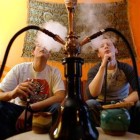
Whatever Happened to the Teenage Shoplifter (and Vandal, Arsonist, Burglar, Joyrider)?
|
More than anything else, property crime defines traditional concepts of “the teenager.” Vandalism, shoplifting, burglary, joyriding, arson, petty theft … all senseless things “dumb kids” do that jeopardize their futures and immiserate everyone’s lives.The teenage shed-torcher, windshield smasher, petty klepto, spray-painter and thrill-seeker whose anti-social destruction defies decency and reason infuriates adults to our core. It is no wonder crime scholars immersed in that era disparage “teenage brains.”
In 1978, the first year California released comprehensive crime numbers by age, more than 130,000 youths were arrested for felony and misdemeanor property offenses. Back then, youths under age 18 accounted for a shocking 43% of all property offense arrests.
Now, that whole species of “teenagers” as we knew it seems to have vanished. Property crime arrests of Californians under age 18, 1978-2018
In 2018, California’s teenaged youth population ages 10-17 was 1.1 million larger than 40 years earlier, Yet, fewer than 10,000 youths were arrested for all felony and misdemeanor property offenses — a 95% decline in the rate of juvenile property arrests. Youths now account for just 8% of California’s property-crime arrests.
The most astonishing drop is among the youngest.
